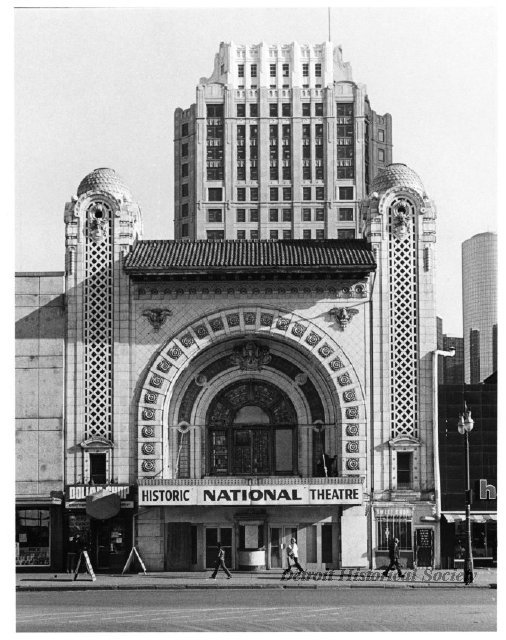Encyclopedia Of Detroit
Water Board Building
The Water Board Building is located on Randolph Street in downtown Detroit. Originally the site of Detroit Police Headquarters from 1886 to 1923, that building was razed and the land sold for the new Water Board building. Designed by Louis Kamper and built in 1928, the original plan called for a 14-story building but, due to the high value of the land, the height was increased to 23 stories. The building consists of a five-story base, a 15-story tower and a three-story penthouse. It was completed in only seven months and constructed in the Art-Deco architectural style from materials including granite, limestone, marble, and terra cotta. The total cost, including the land, was approximately $1.7 million. It is one of the last buildings Kamper designed.
The building has several distinctive features, the most noticeable of which is its triangular shape. The Water Board Building occupies the entire triangular plot of land formed by Randolph, Farmer, and Bates streets. Another unique feature of the building is its hydraulic freight elevator, which was originally connected to Detroit’s water mains. It was upgraded in 1982, and now uses a more contemporary hydraulic mechanism. In addition, the top three floors that compose the building’s penthouse are painted terra cotta, setting them apart from the Bedford Limestone walls that cover the building’s first 20 floors. Thus, the Water Board Building has a two-toned appearance, which distinguishes it from other buildings in the Detroit skyline.
Just past the lobby in the building’s two-story customer service center, the ceiling is covered by murals painted by artists from the George Hamilton Thomas Studios. The central figure of the mural is Neptune, but also depicted are four key individuals from the city’s history: Antoine de la Mothe Cadillac, Colonel Jean Francois Hamtramck, Commodore Oliver Hazard Perry and Chief Tecumseh. Other smaller works show the early history and development of the City of Detroit’s water system.
The Water Board originally only occupied the first eight floors of the building, renting the upper levels to other city departments. Since the early 1990s however, the Water Board has been the building’s sole occupant.



